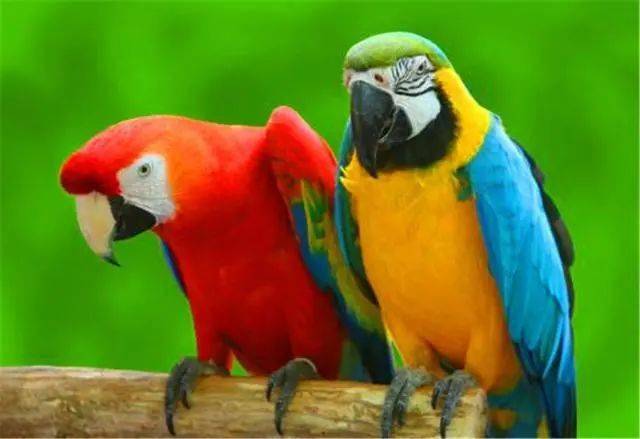Parrots have bright feathers, strong beaks, and are good at imitating human speech, which is also loved by people. Most parrots like to eat plant fruits, seeds, nuts, berries and other foods, and a few parrots like to suck nectar. There are many kinds of parrots, distributed all over the world, the most famous of which is the large macaw.
It is also because parrots are good at learning human language, so many people think that parrots are very smart birds. At the same time, parrots have a very strong imitation ability, such as imitating some human behaviors. Therefore, we can usually train parrots to improve their skills. So, how to train a parrot well? These 5 points need our attention.
First, you have to gain the trust of the parrot. It is to cultivate a good relationship with it, so that it has a good impression on you. We can raise it by hand from the beginning, and let it get familiar with ourselves slowly. The method is to feed parrots milk powder by hand for about 15 days when they were young, and then they can start training. First of all, usually start training with the most basic pilot skills, and then gradually increase other training skills. Therefore, the key is to be kind to them and make them trust you very much.
Second, control the amount of food. For example, after feeding dinner, take away the food box of the parrot, then turn off the light, and let the parrot start to rest. Then at about seven or eight o’clock the next morning, you can feed the parrot and start training. Feed again after training, and train again after about three to six hours. If you usually don’t have much time, you can do one training session. If you have time, it’s better to train two to three times a day.
Third, the training environment. Ensure that the parrot training environment is familiar and relatively quiet, such as a fixed room and table. Generally speaking, as long as the parrot doesn’t get nervous about its surroundings, it’s fine. It is recommended that training is best done on a desktop.
Fourth, the training time. It is recommended that each training session should not exceed half an hour. Generally within the range of 10 to 20 minutes is more appropriate.
Fifth, clean the birdcage on time. It is recommended to clean the birdcage at least once or twice a day, regularly replace the paper under the cage, and clean up the feces and fallen feathers of the parrots in the cage. Also, when cleaning up, don’t disturb the parrots, make them feel safe, there is no harm around them, and prevent them from being frightened. Be sure to remember to keep the birdcage clean at ordinary times to further deepen the relationship between the parrot and you.
There are a few more points to note, usually feed the parrot several times, to feed the parrot, like parrots usually like to eat melon seeds and apples. vegetable. You can also play some games with parrots and have some intimate interactions with parrots. These methods can also promote our relationship with parrots.
All in all, we have to communicate with the parrot after a period of time, and get to know each other to lay a foundation of trust. Don’t act too hastily, step by step, and wait until the parrot is familiar with us before you can start training.
The parrot has gorgeous feathers, likes to imitate human behavior, and is very smart and has a strong ornamental value. I believe that after reading these methods, you have a certain understanding of the way to train parrots. So what do you think about this?
